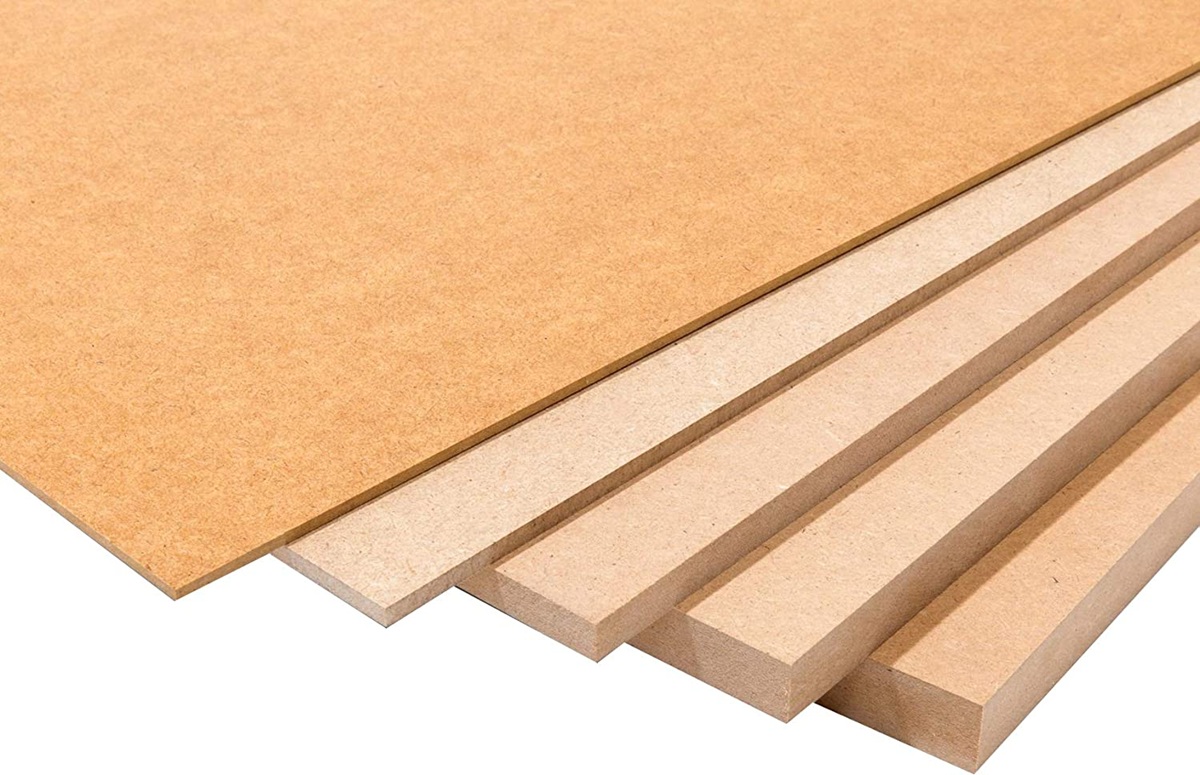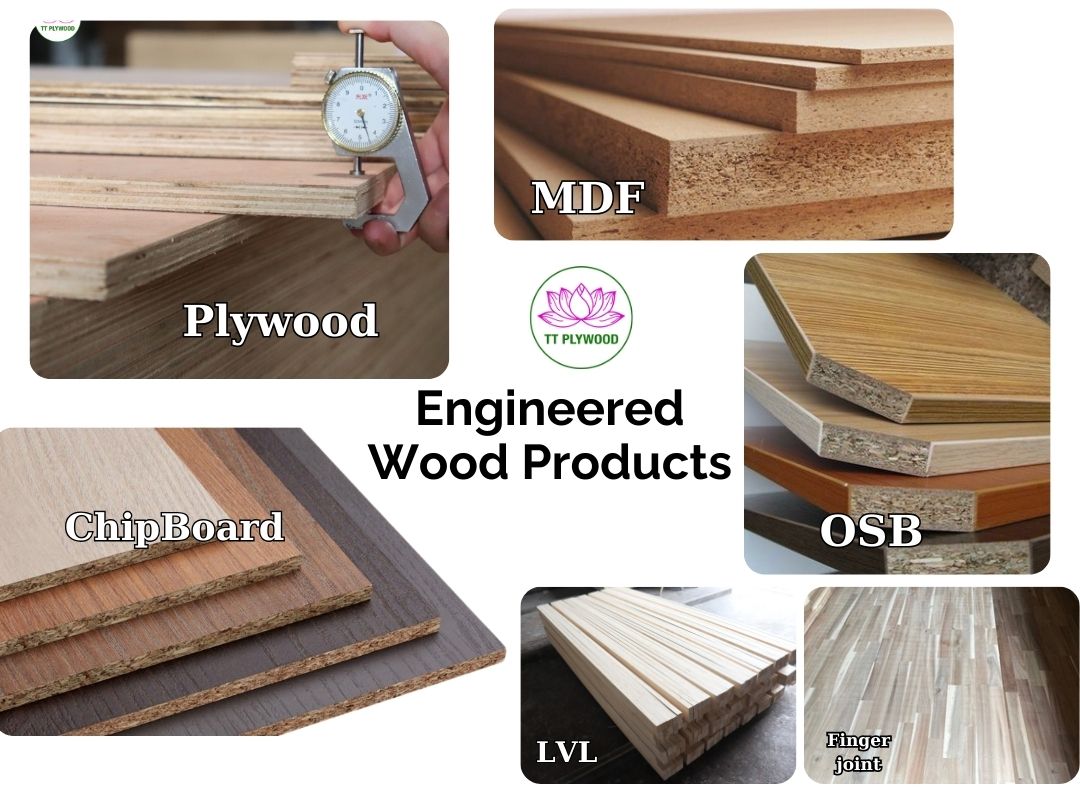-
-
-
Total payment:
-

Confused by MDF, OSB, or LVL? This Expert Comparison Helps You Choose the Right Engineered Wood
Posted by Thanh Uyên at 10/02/2025
The European wood market is experiencing rapid growth, with engineered wood products playing a crucial role in construction, furniture, and packaging industries. Engineered wood, also known as manufactured wood, includes several types such as Plywood, OSB (Oriented Strand Board), MDF (Medium Density Fiberboard), Chipboard (Particle Board), LVL (Laminated Veneer Lumber), and Finger Joint Wood. Each type offers unique properties and applications.
Engineered wood products have transformed modern construction and manufacturing by offering enhanced performance characteristics compared to traditional lumber. These manufactured panels and structural components provide:
- Superior dimensional stability
- Consistent quality
- Optimized material usage
- Specialized performance attributes
The European market has seen particularly strong adoption across multiple industries.
Comparative Analysis of Engineered Wood Types
1. Plywood
Plywood is a highly durable engineered wood made by gluing together thin layers of veneer under high pressure. It is known for its strength, flexibility, and resistance to moisture.

Construction:
- Cross-laminated veneer structure
- Available in various grades (interior, exterior, marine)
- Excellent strength-to-weight ratio
Applications:
- Structural sheathing and subfloors
- Furniture and cabinetry
- Industrial packaging
Key Considerations:
- Veneer quality determines performance
- Requires proper edge sealing
2. OSB (Oriented Strand Board)
OSB is an engineered wood made from compressed wood strands bonded with adhesives. It is an affordable and strong alternative to plywood.
Material Properties:
- Compressed wood strands with waterproof resins
- Consistent panel strength
- Cost-effective alternative to plywood
Primary Uses:
- Wall and roof sheathing
- Web material for I-joists
- Temporary construction surfaces
Technical Notes:
- OSB/3 and OSB/4 grades for moisture resistance
- Requires surface treatment for finish applications
3. MDF (Medium Density Fiberboard)
MDF is manufactured from wood fibers combined with resin and compressed under heat and pressure. It is known for its smooth surface and ease of machining.

Characteristics:
- Uniform density throughout
- Exceptional machining capabilities
- Smooth surface for finishes
Ideal Applications:
- Painted furniture components
- Decorative moldings and millwork
- Speaker boxes and audio equipment
Important Factors
- Lower moisture resistance than wood-based panels
- Formaldehyde-free options available
4. Chipboard (Particle Board)
Chipboard, also known as particle board, is made from wood chips, sawdust, and resin, making it an affordable and lightweight option.

Advantages
- Low cost - Most affordable engineered wood product.
- Lightweight - Easier to handle and transport.
- Smooth surface available with melamine or laminate coatings.
- Eco-friendly - Utilizes wood waste and recycled materials.
Disadvantages
- Weak compared to plywood and OSB - Not ideal for structural applications.
- Highly absorbent - Swells easily when exposed to moisture.
- Shorter lifespan than other engineered woods.
Common Applications
- Budget furniture
- Packaging and shipping crates
- Interior partitions
5. LVL (Laminated Veneer Lumber)
LVL is a high-strength engineered wood product made by bonding multiple thin layers of wood veneer with adhesive. It is primarily used in load-bearing applications.
Structural Advantages:
- High strength-to-weight ratio
- Minimal warping or checking
- Available in long lengths
Construction Uses:
- Beam and header applications
- Scaffolding components
- Industrial formwork
Manufacturing Insight:
- Uses rotary-peeled veneers
- Engineered for specific load requirements
6. Finger Joint Wood
Finger Joint Wood is created by joining shorter pieces of solid wood using finger-like interlocking joints bonded with adhesive, forming longer and more stable boards.
Material Benefits:
- Efficient use of shorter lumber pieces
- Enhanced stability versus solid wood
- Aesthetic appearance for visible uses
Typical Implementations:
- Door and window frames
- Furniture components
- Interior trim work
Comparison Table
|
Feature |
Plywood |
OSB |
MDF |
Chipboard |
LVL |
Finger Joint Wood |
|
Strength |
⭐⭐⭐⭐ |
⭐⭐⭐ |
⭐⭐ |
⭐ |
⭐⭐⭐⭐⭐ |
⭐⭐⭐⭐ |
|
Moisture Resistance |
⭐⭐⭐⭐ |
⭐⭐ |
⭐ |
⭐ |
⭐⭐⭐ |
⭐⭐⭐ |
|
Workability |
⭐⭐⭐ |
⭐⭐ |
⭐⭐⭐⭐ |
⭐⭐ |
⭐⭐⭐ |
⭐⭐⭐⭐ |
|
Cost |
⭐⭐ |
⭐⭐⭐ |
⭐⭐⭐ |
⭐⭐⭐⭐ |
⭐ |
⭐⭐⭐ |
|
Weight |
⭐⭐⭐ |
⭐⭐⭐ |
⭐⭐ |
⭐⭐⭐⭐ |
⭐⭐⭐ |
⭐⭐⭐ |
|
Eco-Friendliness |
⭐⭐⭐⭐ |
⭐⭐⭐ |
⭐⭐⭐ |
⭐⭐⭐⭐ |
⭐⭐⭐ |
⭐⭐⭐⭐ |
|
Applications |
Construction, furniture, packaging |
Structural sheathing, subflooring |
Furniture, interior décor |
Budget furniture, packaging |
Load-bearing beams, scaffolding |
Furniture, interior frames, doors |
Frequently Asked Questions
Q: How does engineered wood compare to solid lumber for structural applications? A: Engineered products offer more predictable performance with less variability in strength properties, though solid wood maintains advantages in certain traditional applications.
Q: What are the fire safety considerations? A: All structural applications require proper fire-rated assemblies as specified in local building codes.
Q: How should these materials be stored on site? A: Keep elevated off concrete, covered from weather, and properly supported to prevent warping.
Industry Trends and Future Outlook
Emerging Developments
- Advanced adhesive technologies
- Hybrid material compositions
- Digital fabrication compatibility
Market Directions
- Increased adoption in mid-rise construction
- Growth in prefabricated component usage
- Enhanced sustainability certifications
Conclusion
Choosing the right engineered wood depends on your specific needs. Plywood and LVL are the strongest and most durable, MDF and Finger Joint Wood are great for furniture, OSB offers affordability in construction, and Chipboard is ideal for budget-friendly applications.










